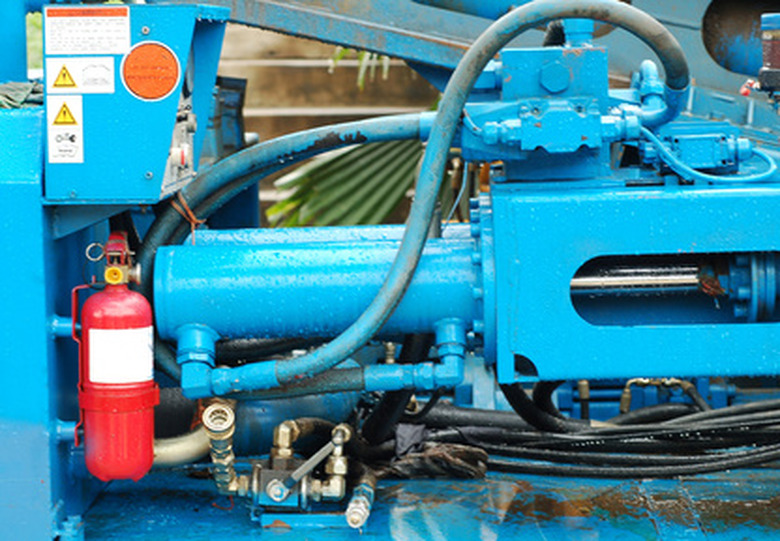How To Calculate Coining Tonnage
In metalworking, "coining" is a form of stamping that does not involve cutting. (Literally, it's "punching without shear.") Instead, the entire surface of the die presses into the surface of the target metal simultaneously with enough pressure to permanently deform the latter. To calculate the pressure (measured in tons per square inch) needed for a die to coin a particular piece of target metal, you need to know the perimeter of the die, the thickness of the metal and the shear strength of the metal.
Step 1
Measure the perimeter of the coining die (in inches). This is the combined length of all of its outer edges.
Step 2
Measure the thickness of the sheet metal you'll be using as the target material (in inches). Note: The thickness is the distance between the front and back surfaces of the sheet.
Step 3
Visit MatWeb.com, a free Web database specializing in the physical and chemical properties of metals, alloys and other materials. See "Resources" for a direct link.
Step 4
Type the name of your target material in the website's "Text Search" field and press "Enter." A new window with the search results will open.
Step 5
Click on the link for your material's data sheet.
Step 6
Find the "Shear Strength" value for the material, measured in pounds-per-square-inch, or psi.
Step 7
Divide this value by 2,000 to convert the units from psi to short tons per square inch.
Step 8
Multiply the measurements from Step 1, Step 2 and Step 7 to calculate the total tonnage requirements for coining your target metal.
References
Cite This Article
MLA
Pasquesi, Andy. "How To Calculate Coining Tonnage" sciencing.com, https://www.sciencing.com/calculate-coining-tonnage-6189848/. 24 April 2017.
APA
Pasquesi, Andy. (2017, April 24). How To Calculate Coining Tonnage. sciencing.com. Retrieved from https://www.sciencing.com/calculate-coining-tonnage-6189848/
Chicago
Pasquesi, Andy. How To Calculate Coining Tonnage last modified March 24, 2022. https://www.sciencing.com/calculate-coining-tonnage-6189848/
